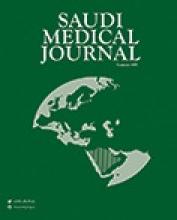Abstract
OBJECTIVE: To investigate for the presence of mycobacteria at water dams of Albaha, Saudi Arabia.
METHODS: An epidemiological study was conducted between 20 - 30 June 2013 in the Albaha region, Kingdom of Saudi Arabia. Five hundred and twenty samples (sand, wet stones, clay, and decayed vegetation) were collected from 13 dams in the region. These locations were: 3 dams from Alaqiq city (Thrad, Alaqiq, and Almshereq); 4 dams from Almandaq city (Almudlamat, Alkhrar, Alsader, and Medhas); one dam from Albaha city (Shehba'a); and 5 dams from Baljerashi city (Alzarawah, Alareshaen, Almatwah, Alheajh, and Almarbah). Samples from these locations (n=520) were inoculated on Lowenstein-Jensen media. The isolated Mycobacterium (M.) obtained were identified by standard culture, enzymatic tests, biochemical characteristics, comparison of mycolic acid profiles, 16S rRNA gene sequencing, and restriction fragment patterns of the hsp65 gene polymerase chain reaction product.
RESULTS: Mycobacterium isolates were recovered from 79% of the samples obtained from all types of samples and locations. A total of 145 of the isolates were found to belong to the 11 Mycobacterium species: 5 M. intracellulare, 8 M. abscessus, 9 M. szulgai, 12 M. fortuitum, 12 M. avium, 14 M. kansasii, 15 M. simiae, 15 M. gordonae, 16 M. terrae complex, 18 M. chelonae, and 21 M. malmoense.
CONCLUSION: Mycobacterium species is present at high percentages in Albaha dams. The findings support a nationwide study to understand the clinical importance of environmental Mycobacterium in Saudi Arabia.
- Copyright: © Saudi Medical Journal
This is an open-access article distributed under the terms of the Creative Commons Attribution-Noncommercial-Share Alike 3.0 Unported, which permits unrestricted use, distribution, and reproduction in any medium, provided the original work is properly cited.






